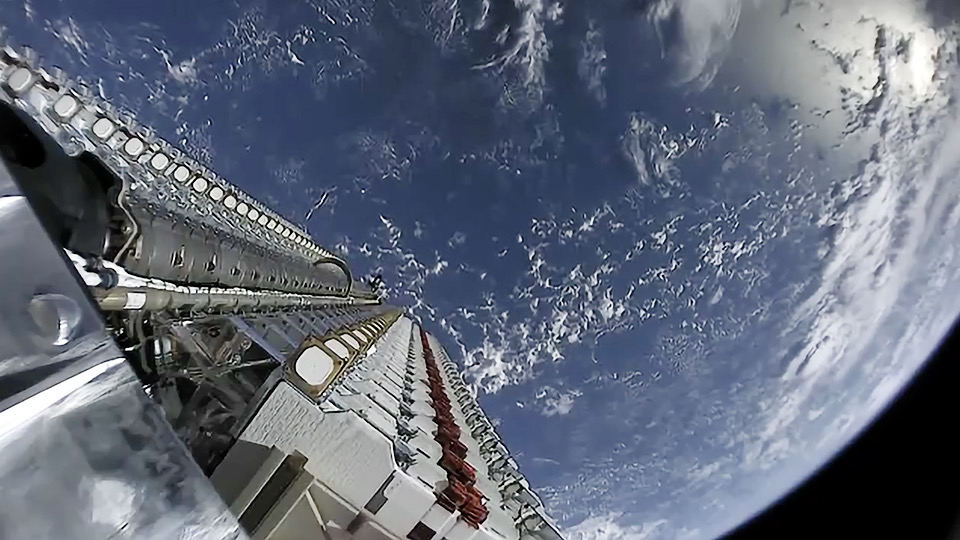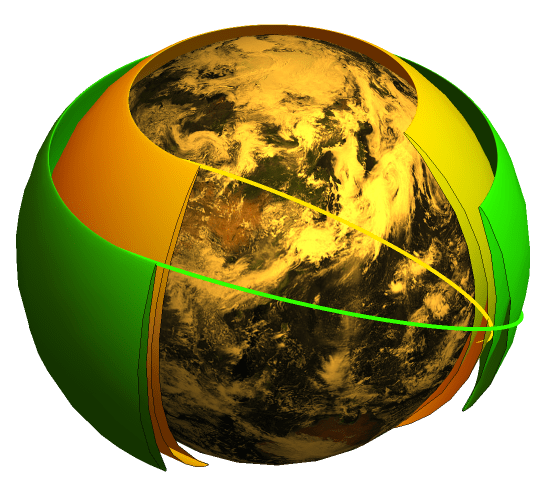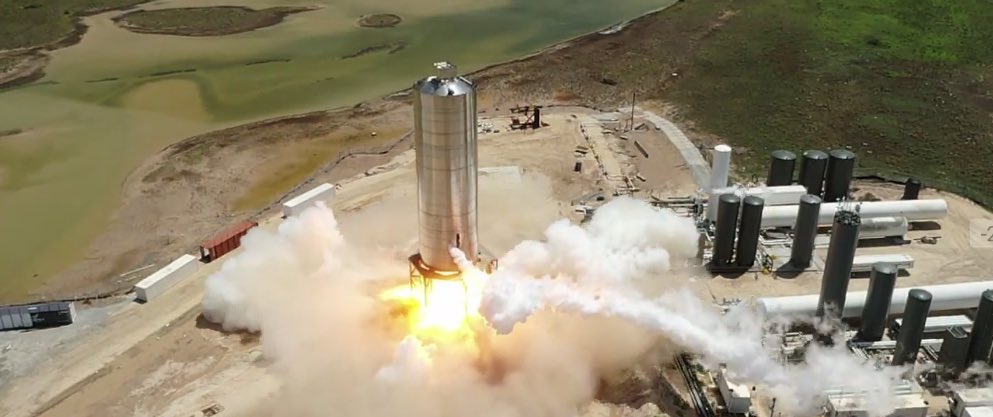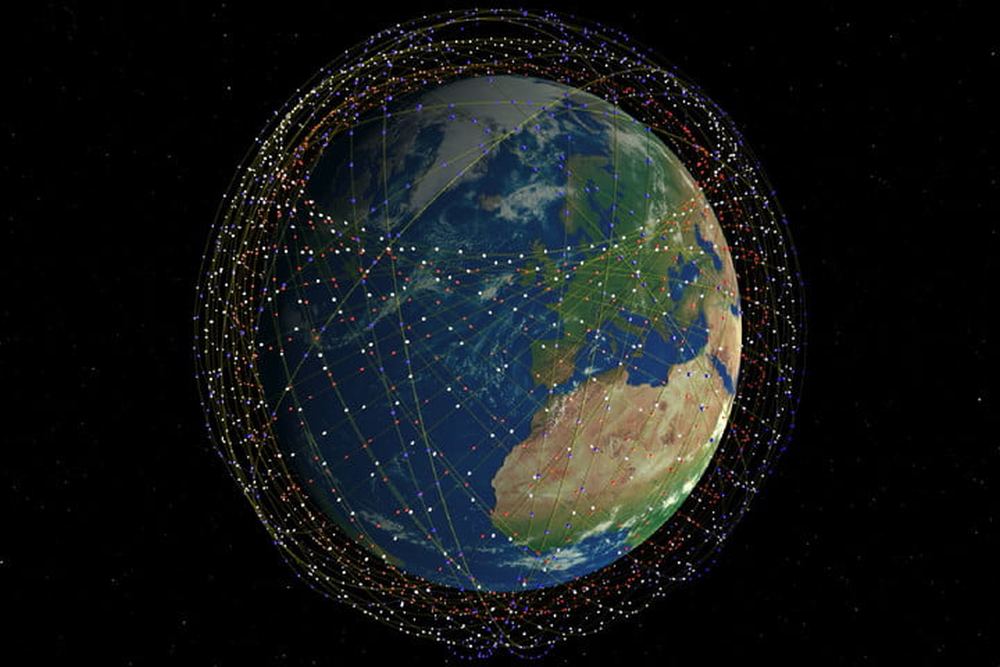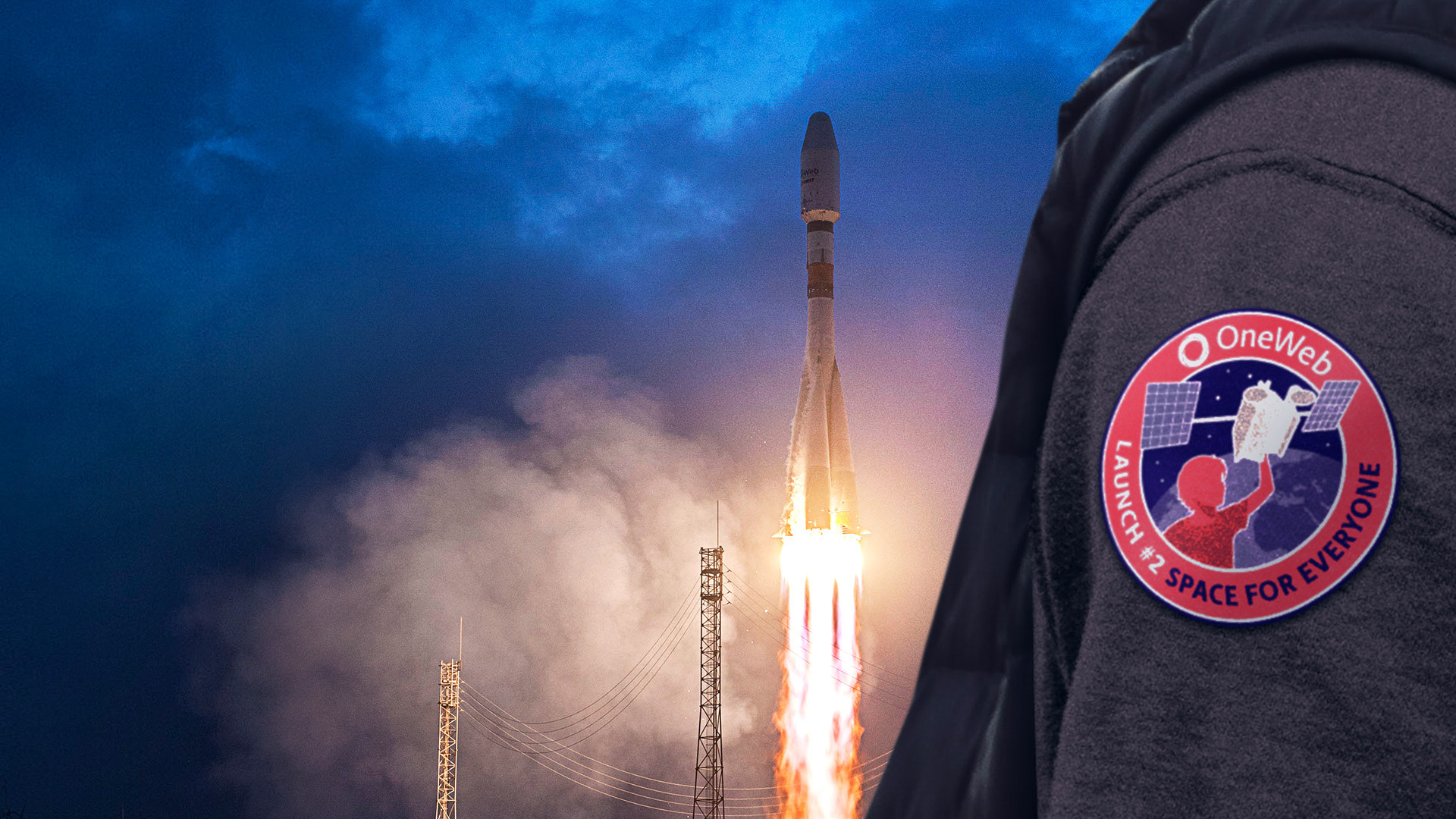Two companies, OneWeb and SpaceX, are racing to put fleets of thousands of communication satellites into orbit. In March they had their first near-miss. Avoidance maneuvers were successful, but how many more close calls will they face in the future?
Continue reading “Starlink and OneWeb Have Their First Avoidance Maneuver With Each Other’s Constellations”One of the Terms of Service For Starlink is that You “Recognize Mars as a Free Planet”
In May of 2019, SpaceX began launching its Starlink constellation with the launch of its first 60 satellites. To date, the company has launched over 800 satellites and (as of this summer) is producing them at a rate of about 120 a month. By late 2021 or 2022, Elon Musk hopes to have a constellation of 1,440 satellites providing near-global service and perhaps as many as 42,000 providing internet to the entire planet before the decade is out.
As of November 2020, SpaceX has invited participants to take part in a public beta test called “Better Than Nothing.” The service, aptly named, is providing users with a modest rate of between 50 to 150 megabits per second, a far cry from the gigabit download speeds at low latency they hope to offer. But perhaps more interesting is the small item in the terms of service, where participants must acknowledge that Mars is a “free planet.”
Continue reading “One of the Terms of Service For Starlink is that You “Recognize Mars as a Free Planet””How Will Starlink’s Packet Routing Work?
SpaceX’s Starlink satellite cluster has been receiving more and more headline space recently as it continues adding satellites at a breathtaking pace. Much of this news coverage has focused on how it’s impacting amateur skygazers and how it could benefit people in far-flung regions. But technical details do matter, and over on Casey Handmer’s blog there was a recent discussion of one of the most important aspects of how Starlink actually operates – what will it do with its data?
Continue reading “How Will Starlink’s Packet Routing Work?”Radio Astronomers are Worried About Mega-Constellations and the Square Kilometer Array

In the coming years, a number of next-generation observatories and arrays will become operational. These facilities will make major contributions to multiple fields of astronomy: exploring the mysteries of the early Universe, studying gravitational waves, determining the role of dark matter and dark energy in cosmic evolution, and directly image “Earth-like” exoplanets.
Unfortunately, this revolutionary development in astronomy may be going up against another major project: the creation of mega-constellations. Because of this, the SKA Organization (SKAO) – which oversees the international Square Kilometre Array (SKA) – is insisting that corrective measures be taken so satellites won’t interfere with its radio observations once it’s operational.
Continue reading “Radio Astronomers are Worried About Mega-Constellations and the Square Kilometer Array”SpaceX is Going to Hop Starship Again This Weekend
With a first successful hop test under their belts using a full-scale prototype, SpaceX is pressing ahead with the testing of the Starship. Tomorrow (on Sunday, August 30th), SpaceX will be attempting to make a second 150 meter (500 ft) hop test, this time with their sixth Starship prototype (SN6). It’s all part of a very busy weekend for SpaceX, with no less than three launches planned.
Continue reading “SpaceX is Going to Hop Starship Again This Weekend”SpaceX Describes Exactly How They’re Planning to Make Starlink Satellites Less Visible From Earth
In 2015, Elon Musk announced that his company, SpaceX, would be deploying satellites to orbit that would provide high-speed broadband internet access to the entire world. Known as Starlink, SpaceX began deploying this constellation in May of 2019 with the launch of the first 60 satellites. As of April 22nd, a total of 422 satellites have been added to the Starlink constellation, and the response hasn’t been entirely positive.
In addition to fears that we’re adding to the problem of “space junk,” there are also those who’ve expressed concern that Starlink and other constellations could have a negative impact on astronomy. In response, SpaceX recently announced that it will be instituting changes in how the satellites are launched, how they orbit the Earth, and even how reflective they are in order to minimize the impact they have on astronomy.
Continue reading “SpaceX Describes Exactly How They’re Planning to Make Starlink Satellites Less Visible From Earth”Elon Musk says that SpaceX Has no Plans to Spin Off Starlink
Last week, the Satellite 2020 Conference & Exhibition wrapped up after four days of presentations and addresses from some of the leading experts in the telecommunications industry. As advertised, SpaceX founder Elon Musk was on hand to deliver a keynote speech in which he announced that (contrary to earlier statements) Starlink will not be spun off and become its own business enterprise.
Continue reading “Elon Musk says that SpaceX Has no Plans to Spin Off Starlink”Astronomers Have Some Serious Concerns About Starlink and Other Satellite Constellations
Picture the space around Earth filled with tens of thousands of communications satellites. That scenario is slowly coming into being, and it has astronomers concerned. Now a group of astronomers have written a paper outlining their detailed concerns, and how all of these satellites could have a severe, negative impact on ground-based astronomy.
Continue reading “Astronomers Have Some Serious Concerns About Starlink and Other Satellite Constellations”SpaceX is Thinking of Spinning Off Starlink and Taking it Public
In May of 2019, SpaceX launched the first batch of satellites that will make up its Starlink constellation, thus delivering on Musk’s promise to provide broadband internet access to the whole world. Since then, the company has conducted several launches of upgraded satellites with the intent of creating a constellation of 1,584 by 2024 and 2,200 by 2027.
According to the latest statements made by Gwynne Shotwell, SpaceX’s President and Chief Operations Officer (COO), the company is considering spinning off Starlink and making it a publicly-traded company in the coming years. The announcement was made on Thursday, Feb. 6th, at a private investor event hosted by JPMorgan Chase & Co. in Miami.
Continue reading “SpaceX is Thinking of Spinning Off Starlink and Taking it Public”Here Comes the Next Satellite Constellation. OneWeb Launches 34 Satellites on Thursday
SpaceX has been garnering all the headlines when it comes to satellite constellations. Their Starlink system will eventually have thousands of tiny satellites working together to provide internet access, though only 242 of them have been deployed so far. But now another company is getting on the action: OneWeb.
Continue reading “Here Comes the Next Satellite Constellation. OneWeb Launches 34 Satellites on Thursday”
